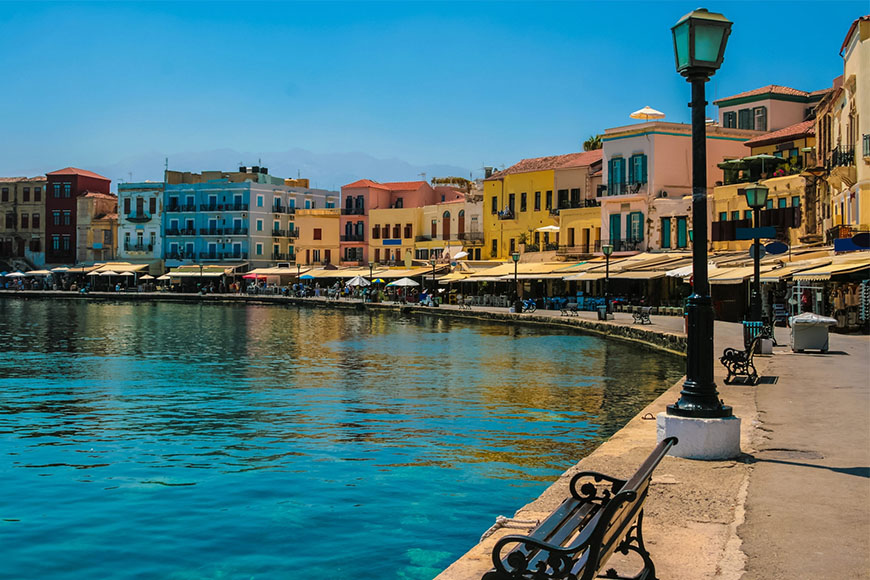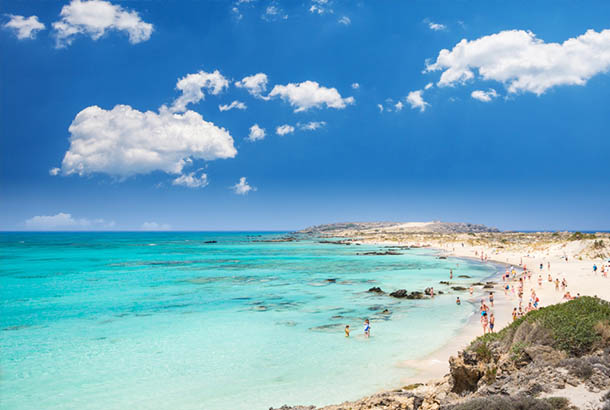Crete is Greece’s largest island, the fifth largest in the entire Mediterranean and the most southern region of the European Union. It lies south of the Aegean Sea, enjoying a privileged geographical position between three continents – Europe, Africa and Asia. The island has an area of 8,261 square kilometers and a coastline that stretches for 1,046 kilometres. Long and thin, it extends 260 kilometres from west to east, varying in width from about 60 kilometres in the centre of the island to just 12 kilometres at its narrowest near Ierapetra in the east. Mountain ranges, snow-crested during much of the year, stretch from west to east, forming the ‘backbone’ of the island: the White Mountains, rising to 8,045 ft., Mount Idhi or Psiloritis (8,058 ft.), the Dhikti Mountains (7,047 ft.) and the Sitia Mountains (4,843 ft.). The most notable plains are those of Messara and Chania, while a number of smaller ones are located between mountain ranges and hills. The narrow length of the island, its rock types and relatively low rainfall has not favored the formation of significant rivers.
58 years of dazzling incentives & events in Greece, by La Greca DMC – We achieve the impossible!!



The main ones are the Keritis or Platanias, the Anapodharis, the Mylopotamos and the Yeropotamos. .
Administratively, Crete is divided into the four prefectures of Chania (capital Chania) in the west, Rethymno (capital Rethymno) and Heraklion (capital Heraklion) in the centre and Lassithi (capital Aghios Nikolaos) in the east.
Crete, with a population of approximately 500,000, is not just sun, sea and sand; it is a quite distinct place full of vitality, warmth, hospitality, culture and of course an excellent infrastructure. In case you wish to organize a conference, meeting, seminar, incentive event or exhibition, Crete can be surely considered. It has it all!
For further destination information visit: www.incrediblecrete.gr

